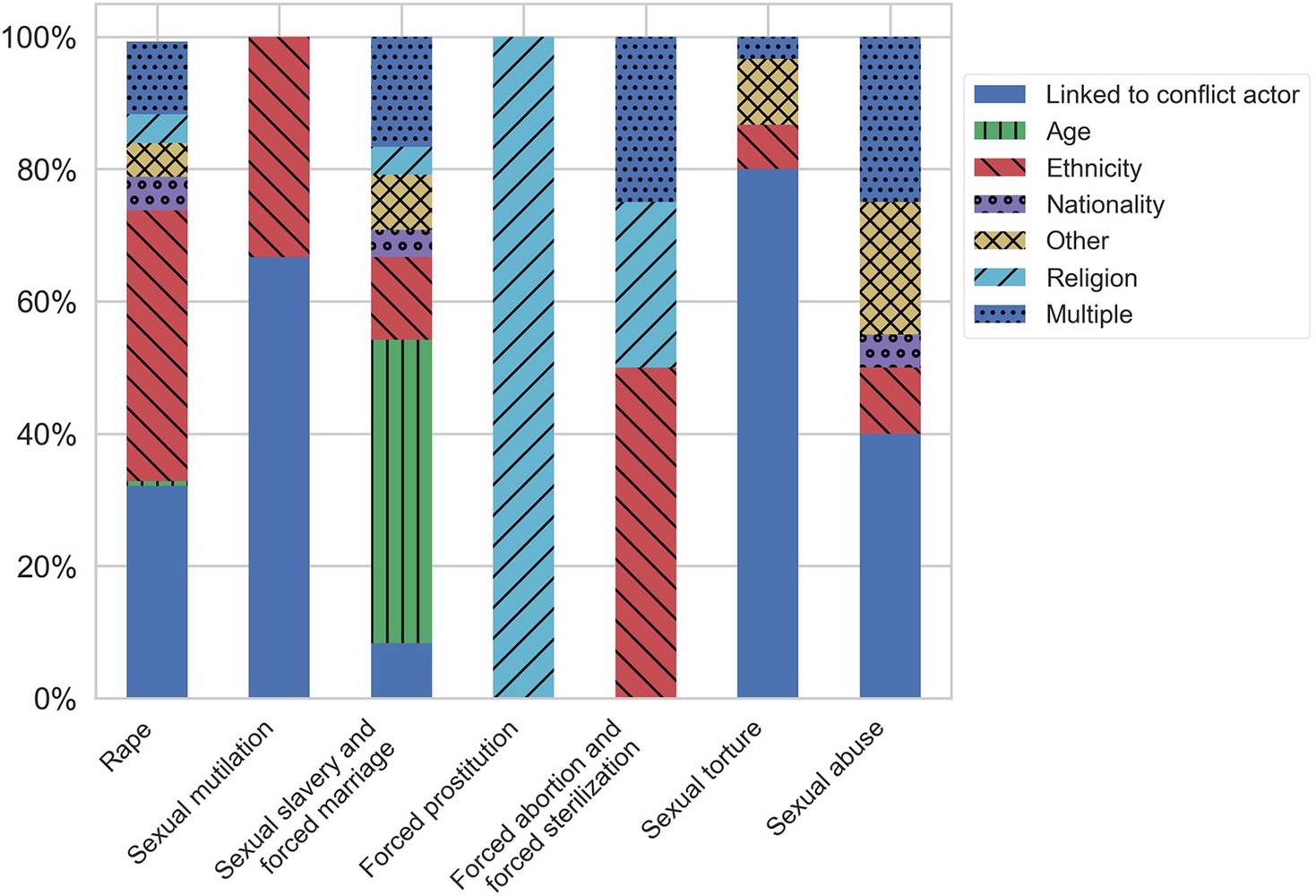
A new article introduces the Repertoires of Sexual Violence in Armed Conflict (RSVAC) data package.
This data source assembles reports from 1989 to 2015 of forms of sexual violence by government/states forces, insurgent/rebel organizations, and pro-government militias for each conflict and year, as well as extensive qualitative notes. The new data package helps disaggregate ‘sexual violence’ into its distinct forms and will therefore enable analysis of the reported presence of forms of sexual violence across time, conflicts, and organizations.
https://journals.sagepub.com/doi/10.1177/00223433211044674?icid=int.sj-full-text.citing-articles.1
Scholars increasingly call for documentation and analysis of specific forms of conflict-related sexual violence. Moreover, accountability for crimes is stronger when specific patterns of victimization are documented.
RSVAC compiles the reported prevalence of eight forms of sexual violence separately – rape, sexual slavery and forced marriage, forced prostitution, sexual mutilation, forced pregnancy, forced sterilization and abortion, non-penetrative sexual torture, and sexual abuse (as well as that of multiple-perpetrator reports of each form).
The data package also includes extensive qualitative notes on reported incidents, as well as ‘conflict manuscripts’ that include the relevant portions of source documents.
Disaggregating ‘sexual violence’ into its distinct forms enables analysis of the reported presence of forms of sexual violence across time, conflicts, and organizations. The article illustrates the usefulness of thinking of sexual violence repertoires by highlighting hitherto neglected global patterns it suggests, and also discuss limitations, potential biases and underreporting that users need to take into account. The authors also outline several research questions that the data can help answer and suggest how the data package could inform policy efforts to address sexual violence and its consequences.





